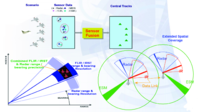
Photo from wikipedia
Wireless visual sensor networks have been adopted in different contexts to provide visual information in a more flexible and distributed way, supporting the development of different innovative applications. Although visual… Click to show full abstract
Wireless visual sensor networks have been adopted in different contexts to provide visual information in a more flexible and distributed way, supporting the development of different innovative applications. Although visual data may be central for a considerable set of applications in areas such as Smart Cities, Industry 4.0, and Vehicular Networks, the actual visual data quality may be not easily determined since it may be associated with many factors that depend on the characteristics of the considered application scenario. This entails several aspects from the quality of captured images (sharpness, definition, resolution) to the characteristics of the networks such as employed hardware, power consumption, and networking efficiency. In order to better support quality analysis and performance comparisons among different wireless visual sensor networks, which could be valuable in many monitoring scenarios, this article surveys this area with special concern on assessment mechanisms and quality metrics. In this context, a novel classification approach is proposed to better categorize the diverse applicable metrics for quality assessment of visual monitoring procedures. Hence, this article yields a practical guide for analyzing different visual sensor network implementations, allowing fairer evaluations and comparisons among a variety of research works. Critical analysis are also performed regarding the relevance and usage of the proposed categories and identified quality metrics. Finally, promising open issues and research directions are discussed in order to guide new developments in this research field.
Journal Title: Future Internet
Year Published: 2022
Link to full text (if available)
Share on Social Media: Sign Up to like & get
recommendations!